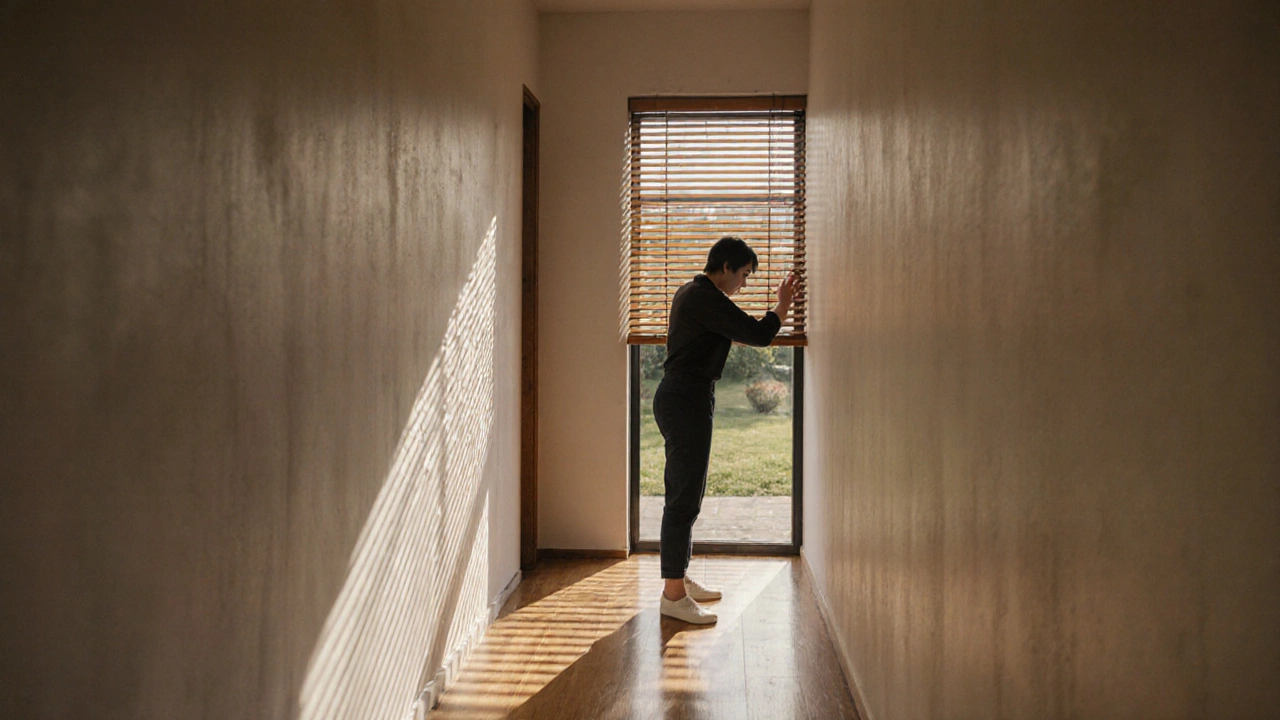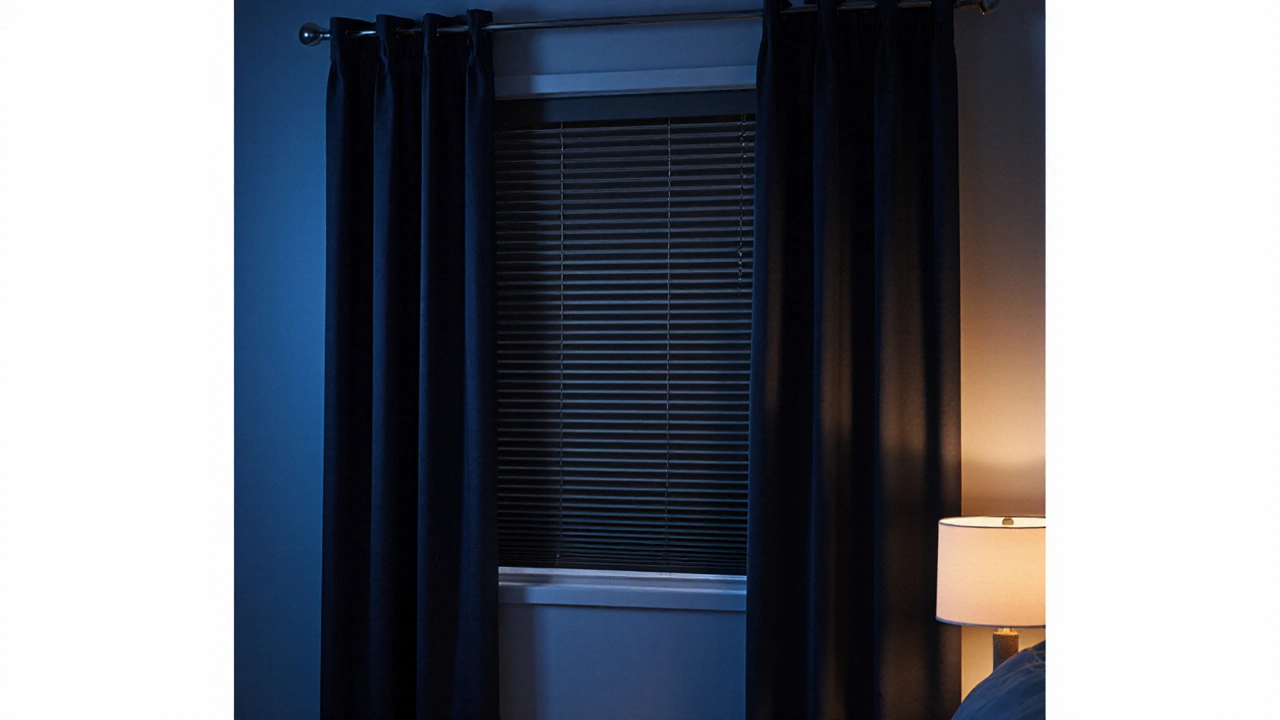Do I Need Curtains When I Have Blinds? Pros, Cons, and How to Choose
 Oct, 17 2025
Oct, 17 2025
Curtains vs. Blinds Decision Tool
Answer a few questions to determine if you need curtains in addition to your blinds.
Key Takeaways
- Curtains add insulation, sound dampening, and style that blinds alone can’t provide.
- Blinds excel at precise light control and low‑profile looks.
- Combining both works best in rooms that need privacy, heat management, and a polished aesthetic.
- If cost or space is tight, choose the option that matches your primary priority.
- Proper layering and maintenance keep both solutions effective for years.
Ever stand in front of your window and wonder if that sleek set of Blinds adjustable slats that tilt to let in or block out light is enough? Maybe you’ve seen a friend’s living room where curtains drape gracefully behind a blind, and you’re not sure whether that’s a design accident or a deliberate choice. The short answer is: it depends on what you need from your windows. This article walks you through the real reasons people layer curtains over blinds, the trade‑offs you’ll face, and a step‑by‑step guide to decide what works best for your home.
What Exactly Are Curtains and Blinds?
Curtains fabric panels that hang from a rod to cover windows have been around for centuries. They come in everything from sheer linen that lets a soft glow filter through to heavy blackout fabrics that turn a bedroom into a dark cocoon. Their main jobs are to add privacy, control light, improve insulation, and boost a room’s look.
On the other side, Blinds adjustable slats, typically made of wood, aluminum, or PVC, that tilt to manage light and visibility are all about precision. Whether it’s a Venetian blind you can tilt to a perfect 45° angle or roller blinds that zip up in a second, they’re built for quick adjustments and a tidy profile.
Why People Pair Them Together
Think of blinds as the functional foundation and curtains as the decorative layer on top. When you combine the two, you get a hybrid that tackles several challenges at once:
- Light control: Blinds let you fine‑tune glare, while curtains can block out the sun completely when you need total darkness.
- Privacy: A narrow blind might still show silhouettes; a curtain adds an extra visual barrier.
- Insulation: Heavy fabrics trap air, reducing heat loss in winter and heat gain in summer-something blinds alone struggle with.
- Sound dampening: Thick curtains absorb echo, making a noisy street feel quieter.
- Aesthetic harmony: Curtains introduce color, pattern, and texture that blinds can’t match.
If you’ve ever felt a draft on a window that only has blinds, you’ve experienced the insulation gap. Adding a curtain can shrink that gap dramatically, especially if you choose a thermal‑lined fabric.

Side‑by‑Side Comparison
| Feature | Curtains | Blinds |
|---|---|---|
| Light Control | Varies by fabric; sheer lets light in, blackout blocks it. | Precise slat tilt; can be fully open or closed. |
| Privacy | Complete visual barrier when closed. | Partial view unless slats are fully closed. |
| Insulation (R‑value) | High with thermal backing; reduces heat transfer. | Low; mainly depends on material. |
| Sound Dampening | Good - fabrics absorb sound. | Minimal - hard surfaces reflect sound. |
| Aesthetic Flexibility | Endless colors, patterns, lengths. | Limited to material finishes. |
| Maintenance | Washable or dry‑clean depending on fabric. | Wipe down; occasional slat replacement. |
| Cost (average per window) | $70‑$250 for good quality. | $50‑$180 depending on material. |
Notice that the table highlights where one wins and the other falls short. The right choice often comes down to which columns matter most to you.
When Curtains May Be Unnecessary
If your primary goal is rapid light adjustment, and you’re comfortable with the look of exposed slats, you might skip curtains altogether. Some scenarios where curtains add little value:
- Small bathroom windows where moisture resistance is key-blinds made of PVC or acrylic are easier to keep dry.
- Modern minimalist offices that prefer a sleek line; too much fabric can look cluttered.
- Budget‑tight renovations where the cost of quality curtains inflates the budget.
Even in these cases, a simple sheer panel can give you a light‑filtering effect without the bulk of a full‑length curtain.

How to Choose the Right Combination for Your Space
Start by ranking the three things you care about most: privacy, energy efficiency, or style. Then follow these steps:
- Measure the window width and height. Note the mounting depth; blinds need a recess or bracket, curtains need a rod that extends beyond the frame.
- Pick a blind type that fits the depth. For high‑insulation rooms, consider cellular (honey‑comb) blinds-they add a bit of thermal barrier.
- Select a curtain fabric based on the climate. In Auckland’s mild, wet winters, a medium‑weight linen with a thermal liner works well. In hotter rooms, choose a light, UV‑blocking fabric.
- Match colors and textures. Use the blind’s finish as a secondary tone; let the curtain be the focal point.
- Test the stacking order. Hang the curtain rod slightly in front of the blind so the curtain can be pulled aside without jamming the slats.
By treating the decision like a checklist, you avoid the common mistake of buying blinds that are too short or curtains that hide the whole window.
Installation and Maintenance Tips
Even the best‑chosen combo can underperform if it’s not installed right. Here are proven tricks:
- Use a sturdy bracket. For heavy curtains, a bracket that supports at least 10kg per side prevents sagging.
- Leave a 2‑3cm gap. Between the blind’s bottom rail and the curtain rod so the fabric can move freely.
- Clean blinds regularly. Dust with a microfiber cloth; for deeper grime, detach the slats and wash with mild soap.
- Launder curtains according to fabric care. Most cotton blends are machine‑washable on a gentle cycle; silk should be dry‑cleaned.
- Seasonal check. Re‑tighten any loose brackets after winter’s humidity, and re‑line curtains that have thinned over time.
With these habits, both blinds and curtains will stay functional and look fresh for years.
Frequently Asked Questions
Can I use sheer curtains with blinds for daytime privacy?
Yes. Sheer curtains let natural light in while diffusing the view from the outside. Pair them with blinds that are tilted closed for maximum privacy without darkening the room.
Do blinds affect the energy efficiency of a room?
Blinds alone provide modest insulation, but they can’t match the R‑value of thermal‑lined curtains. Using both dramatically reduces heat loss in winter and heat gain in summer.
What’s the best order to install them?
Mount the blind first, securing it within the window frame. Then install the curtain rod slightly in front of the blind so the curtain can slide aside without catching the slats.
Are there any safety concerns for kids?
Cordless blinds or motorized options eliminate the strangulation risk. For curtains, use breakaway or child‑safe tie‑backs.
How often should I replace my curtains?
High‑quality fabrics can last 5‑10years if cleaned properly. Replace them when the fabric fades, the lining tears, or it no longer blocks UV as intended.
Whether you decide to go bare‑bones with blinds, add a decorative curtain layer, or use both, the key is to match the solution to your room’s needs. With clear priorities, accurate measurements, and a bit of style confidence, you’ll turn any window into a functional focal point.